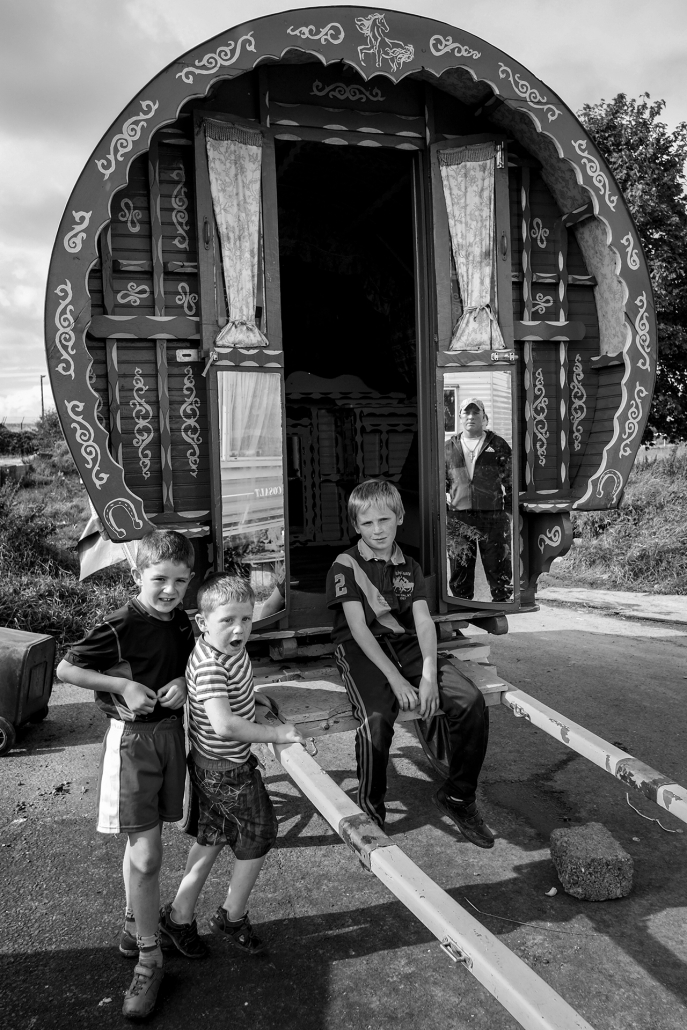Irish travellers
This post is also available in:
 French
French
Ireland 2015 / 2017
« Voyageurs Immobiles » tells the bittersweet story of the daily life of three generations of nomads who ended up settling down during the second half of the twentieth century.
This ethnic minority with nomadic traditions goes back to the middle ages, and was made up of travelling country folk who moved around Ireland with their horses and caravans. These days, there are around 25.000 of them in Southern Ireland and 1.500 in the North.
The Travellers have their own language, values and codes, quite distinct from the customs of Irish society. They are marginalised and excluded from society, most of them living in caravans parked in camps on the outskirts of towns and on the fringe of society. Even though the government has provided sites where the caravans can be parked, certain camps don’t even have running water. Ellen and Paddy, who I met while working on this documentary, live in social housing within a camp in Cashel. Like the majority of their fellow Travellers, they are unemployed and depend on social welfare. A precarious way of life awaits those who settle down.
On March 1st, 2017, the Travellers were officially recognised as an ethnic minority by the Irish government, an important first step in their quest for equality in Irish society.
The members of the community in which Ellen and Paddy live have created their own rules and have invented a sharing of roles specific to men and women. The children, all of whom now go to school, have a precise place in the hierarchy of the family. Paddy junior, the eldest, minds the dogs that they keep for rabbit hunting, and takes care of the horses that graze peacefully in their garden. Paddy senior has a special relationship with his horse, like his ancestors before him. The Travellers have always had horses, whether for working the fields or simply pulling their caravans. Paddy was a boxer in his time and collects medals and trophies. Boxing has been the favorite sport of the community for generations and most of the men practice it. Melissa helps her mother, Ellen, to take care of the eight children. Big families are common in the Traveller community.
I seek to illustrate singular ways of life, and more simply I aim to show « Others » for what they are. That is what I want to convey through my photographs. It was during the winter of 2015, during my first trip to Ireland that I heard tell of Travellers. Being naturally sensitive to the condition of ethnic minorities and to those excluded by society, the disdain that part of the Irish population showed towards the Traveller community encouraged me to go out to meet some of them. That was how I came to meet Ellen and Paddy. I went back to Ireland several times between 2016 and 2017 looking to meet with other families, and while I was often invited into a caravan for a cup of tea, it was only this couple and especially their eight children who allowed me to really enter into contact with the community. We’re still in contact today. I’m waiting for the children to grow older to follow their adolescence within the Traveller community.
I started off with a Fujifilm hybrid camera which allowed me to shoot scenes of real life discreetly. The wide angle kept the subject associated with the surroundings and contributed to the definition of the identity of the various individuals. Research on the subject of the Travellers is rare, and the Travellers themselves have only a vague idea of their origins. I found that using black and white was an appropriate way to reflect the shadows surrounding their history.
Sarah Desteuque



